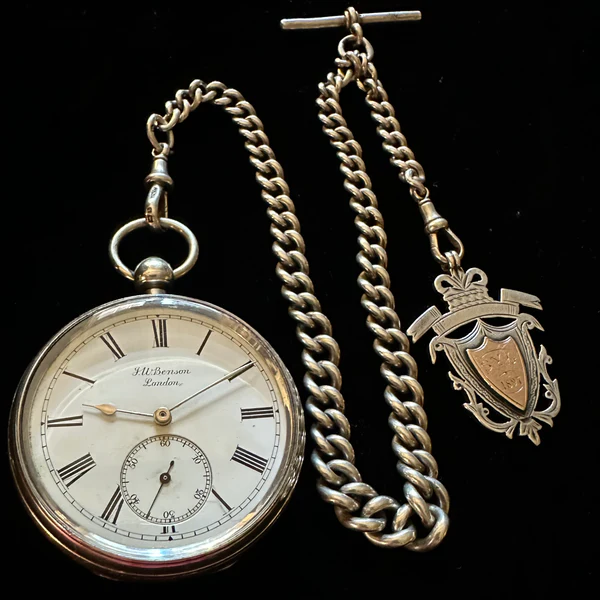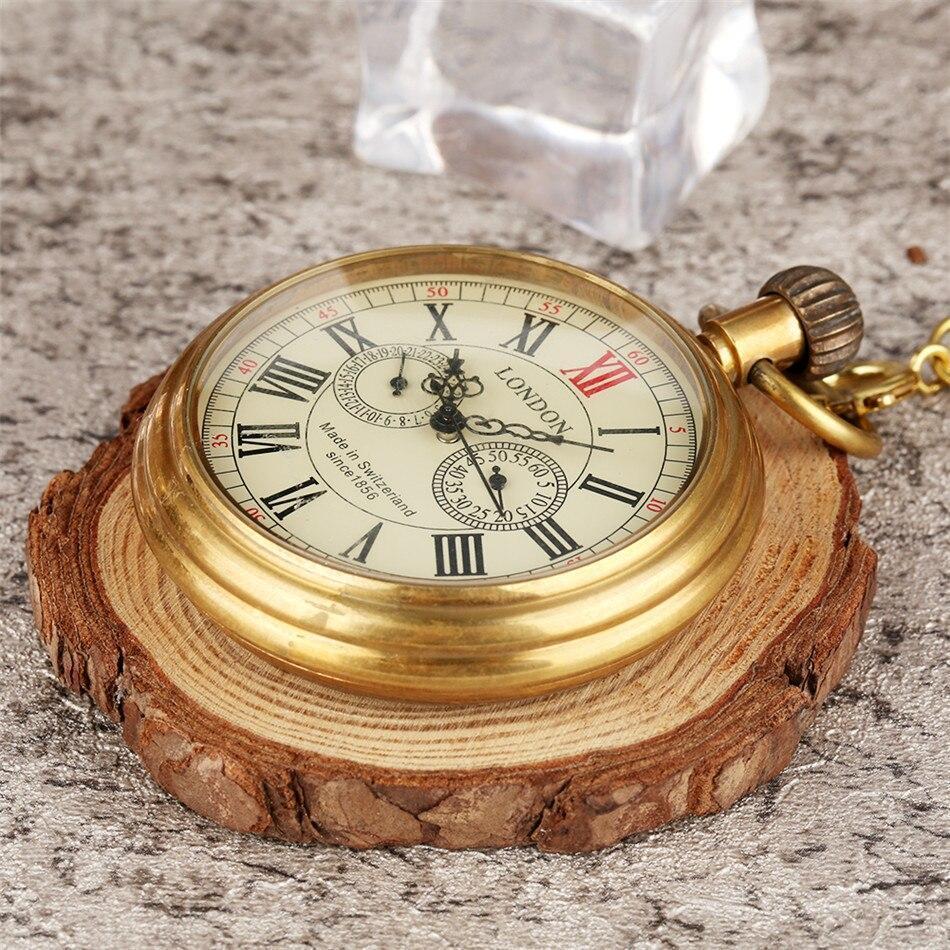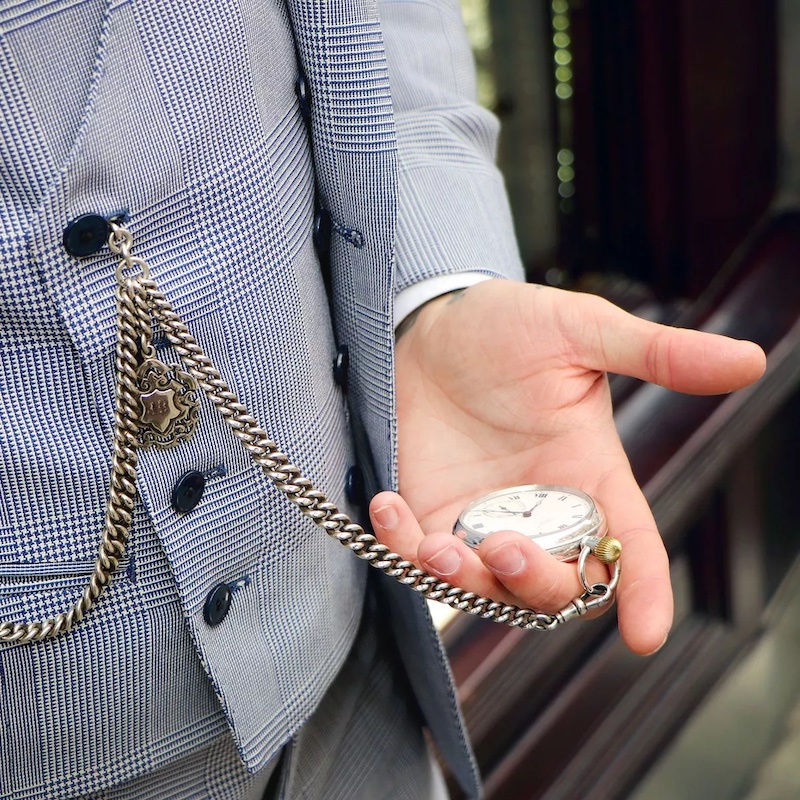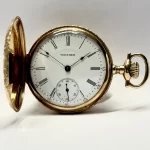The History of Pocket Watches
Emergence and Evolution Over Time
The old pocket watch has come a long way since its inception. Originating in the 16th century, these timepieces started as a symbol of wealth and status. Nobles and royals would often have their pocket watches custom-made, showcasing intricate designs and precious materials. Over time, the pocket watch evolved. It transitioned from a luxury item for the few to an essential tool for many. By the 18th century, innovations in design and mechanics made pocket watches more accurate and affordable.
Famous Watchmakers and Brands
The history of the old pocket watch is also a history of skill and prestige. Famous watchmakers played a key role in its development. Names like Patek Philippe, Breguet, and Vacheron Constantin stand out. These watchmakers became synonymous with quality and craftsmanship. They created pieces that were not just timekeepers but works of art. Brands such as these contributed to the high respect that old pocket watches command even today. Their legacies live on, admired by collectors and enthusiasts alike.
Design and Craftsmanship
Intricate Engravings and Cases
The design of an old pocket watch is a key feature that defines its charm. Craftsmen of the past created elaborate engravings that adorned the surface of pocket watch cases. These engravings varied widely. Some displayed floral patterns, while others depicted scenes or even maps. Materials played a role too. Manufacturers used silver, gold, and sometimes even platinum to encase the delicate innards of a watch. Cases could be smooth or textured, and often included a hinged cover to protect the watch face. Users could personalize their pocket watches with monograms or emblems, making each piece unique.
The Inner Workings of a Pocket Watch
Peering inside an old pocket watch reveals its true artistry. The movement, made up of tiny gears and springs, required precise engineering. Watchmakers delicately assembled these components, ensuring accuracy in timekeeping. The balance wheel, escapement, and winding mechanism were all critical to the watch’s function. Many vintage watches also featured a jewel-bearing system, which reduced friction and wear on moving parts. The sight of these inner workings, especially through a transparent back case, still fascinates many enthusiasts. The care taken in crafting each component is a testament to the dedication of historical watchmakers.
Collecting Vintage Pocket Watches
Starting a Collection
Embarking on the journey of collecting old pocket watches can be both fascinating and daunting. For beginners, it’s important to start by researching and understanding the different types and eras of pocket watches. Consider starting with a specific focus, such as watches from a particular century, branded pocket watches, or unique design features. Always verify the authenticity of a watch before making a purchase and check for hallmarks or maker’s marks that signify its origin and quality.
Networking with other collectors and joining forums can provide valuable insights and sources for finding these timeless pieces. Additionally, visiting antique shops, auctions, and watch fairs are excellent ways to view and compare various pocket watches. Remember, the condition of the watch is key, so look for pieces with minimal wear or damage. A well-established collection reflects one’s personal taste and often, an appreciation for the intricate craftsmanship of yesteryear.
Maintenance and Preservation Tips
Maintaining and preserving an old pocket watch collection requires meticulous care. Here are some essential tips to keep your treasures in working condition:
- Regular Cleaning: Use a soft, dry cloth to gently wipe away any dust or dirt from the watch surface and case. Avoid using water or chemicals that can damage the material.
- Proper Storage: Store each pocket watch separately in a lined box or case to prevent scratches and other damage. Ensure the environment is dry and temperature-controlled to avoid moisture buildup that can cause rust.
- Avoid Overwinding: Be cautious not to overwind the watch, as this can stress the internal mechanisms.
- Regular Servicing: Just like any mechanical device, vintage pocket watches should be serviced by a professional every few years to ensure accurate timekeeping and to prolong their life.
- Handle With Care: Always handle your pocket watches delicately, and avoid exposing them to extreme temperatures or shocks.
By adhering to these guidelines, you can help ensure your old pocket watch collection remains a valuable and cherishable legacy for years to come.
The Value of Old Pocket Watches
Assessing Rarity and Worth
When assessing the value of an old pocket watch, consider its rarity and historical worth. A watch’s age, brand, and condition play huge roles. Rare models or those with historical significance fetch higher prices. Examine the watch for unique features like custom engravings or special mechanisms. Check for any maker’s marks or hallmarks that can confirm its authenticity and increase its value.
Factors such as the number of pieces produced and the presence of original parts influence rarity and worth. A watch’s provenance, or its ownership history, also adds to its value. Collectors prize pieces with a rich backstory or that belonged to notable figures.
Auction Records and Notable Sales
Auction records often reflect an old pocket watch’s value, with notable sales setting benchmarks. Watches from esteemed brands like Patek Philippe or Breguet can sell for substantial sums. Historical pieces associated with significant events or owned by celebrities can skyrocket in price. Following auction results helps collectors gauge current market trends and the potential worth of their own pieces.
Look out for news on remarkable auction sales, as they often make headlines and shake up the collector’s community. Not only can they influence the value of similar pocket watches, but they also give insights into which types or eras of watches are in demand.
In conclusion, determining the worth of old pocket watches takes research and a keen eye for detail. Rarity, condition, and historical significance are key factors in this intriguing and potentially lucrative hobby.
How to Wear and Style Pocket Watches
Traditional vs. Contemporary Fashion
Incorporating an old pocket watch into your attire can bridge the gap between past and present fashions. Traditionally, pocket watches were part of formal attire. They hung from a watch chain and tucked into a waistcoat or jacket pocket. For a vintage look, pair your watch with classic suit vest. Attach the chain to a buttonhole for a distinguished style. Modern fashion allows more flexibility. You can attach your pocket watch to belt loops or even wear it as a necklace. Adaptability in contemporary fashion means there’s room to create unique, personal expressions using these timeless pieces.
Accessories and Attire for Pocket Watches
To truly embrace the elegance of an old pocket watch, consider the right accessories and attire. Chains are essential. They come in various styles: the traditional Albert or single chain, the double Albert, or a T-bar chain. Select a chain that complements your watch and outfit. In addition, choose attire that features a pocket suitable for your watch. This could be a waistcoat, a blazer with a dedicated pocket, or even a well-tailored trouser. Cufflinks or a tie clip that match your watch can enhance your overall look. Remember, when styling your pocket watch, let it stand as the centerpiece and choose other accessories that support, not overpower, its charm.
Restoring and Repairing Vintage Pocket Watches
Old pocket watches often require restoration or repairs to maintain their beauty and functionality. Due to their age, these timepieces might have faced wear and tear, leaving them in need of careful attention.
Professional Restoration Services
When it comes to restoring an old pocket watch, it’s wise to turn to professional services. Experts specialize in the delicate task of bringing vintage watches back to life. Look for well-known restorers with a track record of dealing with antique timepieces. They will carefully clean, oil, and calibrate the watch using the right tools and expertise. A professional can also source rare parts or fabricate components that are no longer available. To find a reliable service, ask for recommendations from collectors or check for certified watchmakers with good reviews.
DIY Care and Minor Repairs
For minor repairs or regular upkeep, you may try some DIY care at home. But act with caution. Clean the exterior of your old pocket watch with a soft cloth. Avoid opening the case if you’re not familiar with the inner workings of the watch. Simple tasks like replacing a broken crystal can sometimes be done at home, provided you have the right tools. However, intricate tasks like fixing the movement or restoring the dial are best left to professionals. Always remember that one wrong move could damage the watch beyond repair. For DIY enthusiasts, consider learning from books, online tutorials, or workshops dedicated to watch repair and maintenance.
Maintaining and restoring old pocket watches not only preserves their physical appearance but also ensures their legacy continues ticking for generations to come.
Pocket Watches in Popular Culture and Media
Appearances in Films and Literature
Old pocket watches have a special place in films and literature. They often appear as key plot devices or symbols. In movies, they can signal a character’s class or hint at a period setting. For example, a character in a historical drama may use a pocket watch to emphasize the era. In books, authors describe pocket watches to enrich a story’s detail and authenticity.
Directors and writers choose pocket watches for their visual and emotional impact. They can represent time’s passage or a connection between characters. Think of a film where a pocket watch is a family heirloom. It can link the past with the present and suggest enduring values.
Symbolism and Representation
The symbolism of old pocket watches is powerful. They often stand for tradition, legacy, and the fleeting nature of time. In stories, a character might inherit a pocket watch, showing a family bond or a burden of legacy. In art, a pocket watch may appear still and silent, suggesting nostalgia or lost time.
These timepieces evoke a sense of mystery and continuity. They remind us that while times change, the human stories woven around these watches remain timeless. Whether in a modern setting or a tale from centuries ago, old pocket watches capture our imagination and link us to our history.
The Future of Pocket Watches
Modern Resurgence and Trends
In recent years, the old pocket watch has seen a surprising trend: a modern resurgence. Fashion-forward individuals and vintage enthusiasts are reviving the classic appeal of these timepieces. They are blending them with contemporary styles. The lure of vintage charm combined with modern-day fashion creates a unique statement that stands out in a world dominated by wristwatches and digital devices.
Pocket watches are now popping up in unexpected places, from runway shows to streetwear. Designers are creating pockets in new lines of clothing specifically for these antique timekeepers. People are using them not just as time-telling devices but as fashion accessories that reflect personal style and a nod to history.
Social media and online platforms contribute to this trend by showcasing the versatility of pocket watches. They are being styled in various ways by influencers and fashion icons. This revival is a testament to the timeless allure of old pocket watches. Their ability to adapt to the times keeps them relevant and cherished.
The Role of Technology in Pocket Watch Innovation
Technology is not sidelining old pocket watches; rather, it’s giving them a new lease on life. Tech-driven innovations have led to the creation of smart pocket watches that combine the best of both worlds. These devices feature traditional analog displays with modern digital capabilities, like tracking fitness or syncing with smartphones.
Watchmakers are also using technological advancements to improve the precision of mechanical pocket watches. They are utilizing new materials and methods to enhance the durability and functionality of these classic designs. Some updated models include features like GPS, heart rate monitoring, and even solar-powered movements.
Enthusiasts of the old pocket watch have a lot to look forward to. With technological enhancements breathing fresh life into these historic pieces, they strike a balance between tradition and innovation. As a result, pocket watches are poised to be more than just relics of the past; they’re becoming a renewed trend with a promising future.




